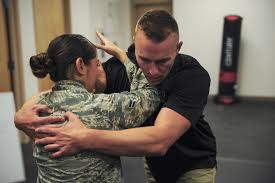
The only REAL blocks are cognitive! Part 1
- Renegade Martial Arts

- Oct 28, 2022
- 4 min read
Part 1
Introduction and Rationale
Taekwon-do is a rich and varied martial art. As we know it's predominantly striking based and so it's no surprise that the majority of techniques found within the art are percussive strikes, punches and kicks and the apparent techniques to defend against these. In a recent (-ish) edition of Totally Taekwon-do (edition 155, Jan 2022)
Grandmaster Earl Weiss authored an article entitled '3200 Techniques 2000 hand techniques' (p. 59) Within this article GM Weiss attempted to classify and list the techniques of Taekwon-do. The list in the article ran to some 1395 techniques.
Within this list 38.2% of the techniques were termed blocks. That's over a third of the techniques listed (and yes the 'elephant in the article' is that there indeed were approximately 1900 techniques absent from this list) where the stated 'traditional' purpose or interpretation would be to stop, deflect in some way defend from an incoming strike.
That's a staggering amount of techniques given over to such an essentially simple premise. Indeed as practitioners of this art we could be forgiven if we ended up with an incoming fist in the mouth, whilst we tried to process which of the potential 533 'blocks' we should engage at that point!
Absolutely it is the case that some of these 500+ variations are employed in a fashion which may deflect or oppose incoming strikes. It is further conceivable that there would need to be a degree of variation given the potential incoming line, height, vector or intended target for that particular strike. However 533 different variations seems extremely excessive, given the relatively limited directions and heights that the strike may come from.
Without needlessly over complicating the issue (and relative to the originating position of the striker/striking limb) any strike must be travelling in a direction which is vertical (up or down) or horizontal (inwards, outwards or direct towards). Whilst there may be combinations of the above, there is little doubt that the potential combinations come close to the magical figure of 533. Indeed if an outward horizontally travelling arm, bent to an angle of around 45° to 60° may be used to prevent the impact of a direct or inward travelling strike (choose your limb as appropriate) how can it be that there is a necessity for such variety. Ultimately, either it's unreasonable smoke and mirrors, conspiratorially determined by the founders of the art or we as practitioners have made sweeping generalisations and misinterpreted the true functions of some of these techniques.
As a supportive anecdote from my own Taekwon-do journey, when initially learning pattern Joong-Gun, I enquired of my then instructor what the purpose of movements 3 and 6 (Palm Scooping Block) were. He suggested that this was a carry over from antiquity and retained in the art for aesthetic purposes. In other words he essentially suggested it looked pretty and that was about it. No function outside of it being an expression of art in movement.
Now whilst that may be worthwhile to some, to me it smelt more like he had neither given it any thought or indeed been inspired to investigate (or indeed instructed) in the potential function. Surely (I thought) in a martial art there had to be a martial purpose to the movements. Moving on a few years in my development and training now under different instruction I broached this question again. The highly experienced and respected teacher suggested to me that I was parrying a direct punch upwards. OK, I thought so now instead of the strike hitting my body, I have changed its trajectory towards my face. Excellent. Now it's entirely possible in an universe of infinite possibilities that the conditions and context exist where both of these purposes are both possible and credible. However it's as equally possible that neither solution gave the correct answer and the function is something completely, almost radically different.
The question therefore is, if some of these 'blocks' were never intended to stop, deflect or protect from an incoming attack, what are they for?
Firstly it's probably worth discounting the idea (however meaningful and spiritually worthwhile it may be) that the blocking techniques are just for an 'artistically expressive' purpose. Secondly we need to look beyond the 'traditional' interpretation of 'parrying', stopping or 'protecting' from incoming strikes. It's possible then to suggest that there may be 4 other alternative functions for these types of movements:
'BLOCKS' AS FRAMES
'BLOCKS' AS TRAPS
'BLOCKS' AS STRIKES
'BLOCKS' AS THROWS
This is not an exclusive list. Indeed our overall premise here is that the functional potentialities here are limited only by the context, and creativity of the individual practitioner. We wholly believe however that within the art of Taekwon-do there are no movements or techniques without martial function. We would further suggest that much of the misinformation and traditional interpretations provided to the function of these movements is due lack of credible source information, adequate investigation and research. Taekwon-do has evolved as a dynamic striking art, this has created a 'range bias', whereby all techniques within the art must have a function which relates to striking (typically this is exclusive to medium and long range striking too).
However, as an art which has origins as much in the Okinawan and Japanese martial forms, as it does the Korean, the true basis for the art is one of a complete martial system. In this, the art includes grappling and throwing, joint manipulations, chokes and strangles both standing and ground based. When we accept that the range and technical basis is beyond merely medium and long range striking, the context, delivery and function of some of our blocking techniques becomes very different.
Our intention with this investigation is to consider each of the 4 alternative options in turn across our forthcoming articles. We will seek to provide a discussion and evidence to support each area of function. In this way our intention is to better facilitate further reflection, research and deeper investigation.
























































Comments